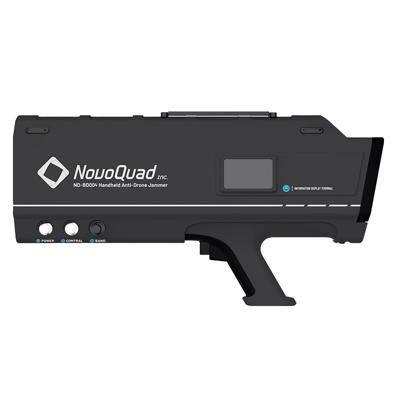Recent years have seen new developments in drone technology, making them accessible and affordable in a widespread manner. However, this phenomenon has also made it easier for terrorists and criminals to utilize drones for malicious uses. Today, government agencies have to deal with spying missions and attacks from illegal drones. Such drones threaten critical infrastructure and try to extract sensitive information from high-level organizations. Hence, it is imperative to deploy anti-drone jamming systems to prevent these devices from causing security breaches. These tech-driven solutions can help the government agencies safeguard the nation. Let’s understand how anti-drone jamming solutions work and the salient features that make them effective.
Anti-Driven Jamming System: What Do They Do?
An anti-drone jammer system is a tech-driven tool to stop illegal drones. A drone is controlled through radio signals that are sent from the remote controller’s transmitter to the drone’s receiver. A drone jammer jams these signals and disrupts the communication between the drone and its controller. After the communication breakdown, the drone may land wherever it is or return to its origin. Some drones may be programmed to fly in auto-pilot mode after losing contact with the controller. Cutting-edge drone jamming systems are capable of blocking GPS signals of drones flying in auto-pilot mode or using GPS navigation.
Cutting-Edge Drone Jamming Capabilities: Key Features to Consider
There are different drone jammers available in the market. However, organizations must prioritize future-forward features while choosing the right solution. Here are the top features to consider while selecting a drone jammer:
- Extensive RF Blocking Capabilities: A high-tech drone jammer should be able to block radio signals emitted by drones under different conditions. Firstly, it should prevent general signal outputs, such as remote control signal. Secondly, it should also block radio frequencies at the GPS L1 band in case the drone flies in auto-pilot mode. GPS L1 signals are commonly used by autonomous drones. When drones fly in auto-pilot mode, they can complete their missions without relying on the manual remote control. In such situation, the drone jammer must jam the L1 radio frequencies to prevent illegal activities.
- Adaptability and Flexibility: A top-notch drone jammer should be capable of being adapted according to the specific application scenarios. Sophisticated anti-drone jammer systems can be adapted with different output strength and frequency coverage based on requirements. Typically, the operation’s geographical area, application, and requisite protection level influence these adaptations.
- Collaborative Integrations: A high-performing drone jammer must be capable of being integrated with other anti-drone systems. Leading drone jamming systems are suitable for cooperative deployment alongside anti-drone radars. Such collaborative integration improves accuracy, performance, and efficiency.
These features can help organizations build strong defense capabilities and bolster security systems with tech-driven solutions. If you want to explore high-tech drone jammers with advanced features, you can browse products from NovoQuad Group. Their expert team can help you understand the characteristics, applications, and benefits of anti-drone jammer systems. Contact them today to learn about these devices in detail!


No comments yet